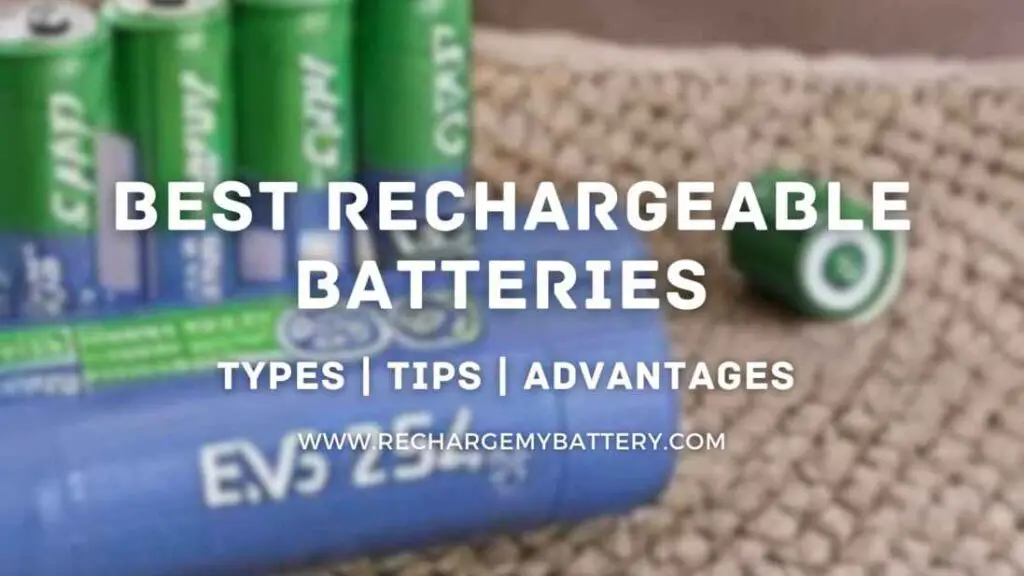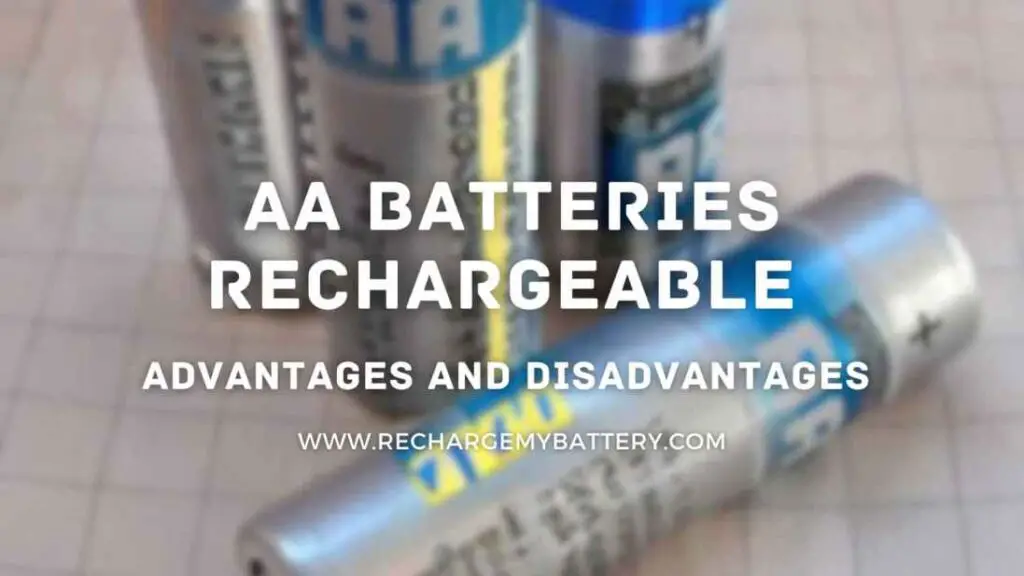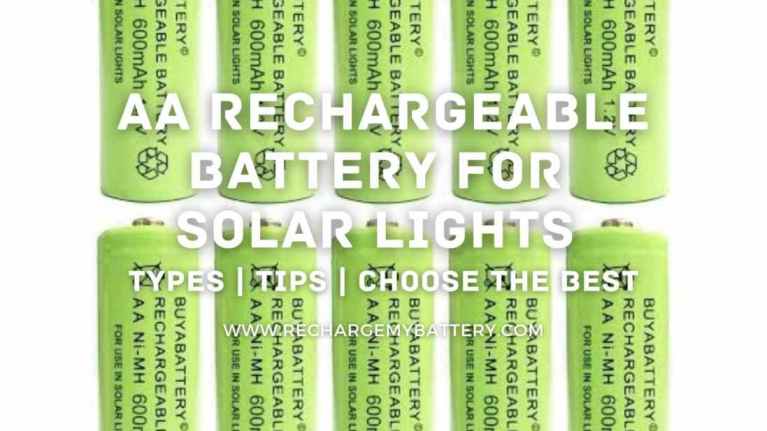Are you tired of constantly buying new batteries for your electronic devices? Rechargeable batteries are an excellent alternative for those who want to reduce waste and save money in the long run. With so many options available in the market, it can be challenging to choose the best rechargeable batteries.
In this article, we will explore the best rechargeable batteries available in the market and help you make an informed decision.
Introduction
In our daily life, electronics have become an integral part of our routine, from smartphones to gaming controllers, we depend on them for staying connected and entertained. However, these devices need batteries and constantly buying new batteries can be expensive and harmful to the environment.
Rechargeable batteries offer a practical solution for those who want to save money and reduce waste. Let’s now walk ourselves through a comprehensive guide to the best rechargeable batteries available in the market and assist you in choosing the right one for your needs.
What are Rechargeable Batteries?
Rechargeable batteries, also known as secondary batteries, are a type of battery that can be recharged after they have been depleted of power. These batteries are typically made of materials that can be recharged through a charging process, which involves passing an electrical current through the battery.
Rechargeable batteries are designed to be used multiple times and are a more sustainable alternative to disposable batteries.
3 Types of Rechargeable Batteries
There are several types of rechargeable batteries available in the market, which include:
- Nickel Cadmium (NiCad) batteries
- Nickel Metal Hydride (NiMH) batteries
- Lithium-Ion (Li-ion) batteries
1. Nickel Cadmium (NiCad) batteries
Nickel Cadmium (NiCad) batteries were the first rechargeable batteries introduced to the market. These batteries have a relatively low energy density, meaning they do not last as long as other types of rechargeable batteries.
NiCad batteries are also known for their “memory effect,” which means they require full discharge before they can be recharged again.
2. Nickel Metal Hydride (NiMH) batteries
Nickel Metal Hydride (NiMH) batteries are a newer and better version of NiCad batteries. They have a higher energy density, which means they last longer than NiCad batteries on a single charge.
Unlike NiCad batteries, NiMH batteries don’t suffer from the memory effect, so they don’t need to be fully discharged before recharging.
NiMH batteries are also more environmentally friendly than NiCad batteries as they don’t contain toxic metals such as cadmium.
3. Lithium-Ion (Li-ion) batteries
Lithium-Ion (Li-ion) batteries are currently the most widely used type of rechargeable batteries in the market. These batteries have a higher energy density compared to other types of rechargeable batteries, which means they can last longer.
Li-ion batteries are also lightweight and do not experience the memory effect that NiCad and NiMH batteries can have. However, they tend to be more expensive than NiCad and NiMH batteries.
5 Advantages of using rechargeable batteries
Some of the benefits of using rechargeable batteries are.
1. Cost Effective
Rechargeable batteries can be used multiple times, saving you money in the long run.
2. Environmentally Friendly
Rechargeable batteries produce less waste than disposable batteries, making them better for the environment.
3. Convenient
Rechargeable batteries can be easily recharged, eliminating the need to constantly buy new batteries.
4. Versatile
Rechargeable batteries are available in various sizes and types, making them suitable for different devices.
5. High performance
Some rechargeable batteries have a higher energy density than disposable batteries, resulting in longer-lasting and better-performing power.
5. Factors to consider when buying Rechargeable Batteries
When choosing the best rechargeable batteries, there are several factors that you should consider. These are as follows:
1. Capacity
The capacity of a battery refers to the amount of energy it can store, so choose a battery with a higher capacity for longer use.
2. Voltage
The voltage of a battery is important to match the voltage requirements of your device.
3. Type
Consider the type of rechargeable battery that best suits your needs, such as NiMH or Li-ion.
4. Brand
Choose a reputable brand for quality and reliability.
5. Price
Rechargeable batteries vary in price, so choose one that fits your budget.
Top rechargeable batteries available in the market
There are various rechargeable batteries available in the market, but some are better than others. Here are some of the top-rated rechargeable batteries available in the market:
1. Panasonic Eneloop Pro
The Panasonic Eneloop Pro is a popular rechargeable battery known for its high capacity and long-lasting power. It’s ideal for high-drain devices such as cameras and gaming controllers. Eneloop Pro batteries are also durable and can handle extreme temperatures.
2. Energizer Recharge Universal
It is a versatile rechargeable battery that is compatible with various devices. With long-lasting power, these batteries can be recharged up to 1000 times. Another advantage is that they come pre-charged, so they are ready to use right out of the package.
3. Duracell Recharge Ultra
The Duracell Recharge Ultra is a rechargeable battery that offers high performance and is ideal for use in devices that have high power requirements. These batteries have a longer-lasting power and can be recharged up to 400 times.
They also come pre-charged and have a low self-discharge rate, so you can use them right out of the package and store them for longer periods without losing their charge.
Best rechargeable batteries for high-drain devices
High-drain devices like cameras and gaming controllers require batteries with high capacity and long-lasting power. Here are some of the best rechargeable batteries that can be used in high-drain devices:
1. Panasonic Eneloop Pro
The Panasonic Eneloop Pro is considered one of the best rechargeable batteries for high-drain devices due to its high capacity and long-lasting power.
It is specifically designed for devices that require a lot of energy, making it a reliable choice for cameras, gaming controllers, and other similar gadgets.
2. Duracell Recharge Ultra
The Duracell Recharge Ultra is another excellent rechargeable battery for high-drain devices. These can be recharged up to 400 times and have long-lasting power, making them a reliable and cost-effective option.
Best rechargeable batteries for low-drain devices
Low-drain devices like remote controls and clocks require batteries with a low self-discharge rate and those having long shelf life. Here are some of the best rechargeable batteries for low-drain devices:
1. Energizer Recharge Universal
It’s a great choice for low-drain devices like remote controls and clocks. These batteries have a low self-discharge rate and a long shelf life, which means they can hold their charge for a long time.
2. AmazonBasics Rechargeable
The AmazonBasics Rechargeable batteries are a great choice for low-drain devices like remote controls and clocks. They have a low self-discharge rate and can hold their charge for up to 3 years.
Additionally, they are affordable and come in a variety of pack sizes, making them a convenient option.
Tips for using rechargeable batteries
Listed below are some of the tips for using rechargeable batteries:
- Charge your batteries before they are completely drained to avoid over-discharging them, which can shorten their lifespan.
- Store your batteries in a cool, dry place away from direct sunlight. Exposure to heat and moisture can cause your batteries to degrade more quickly.
- Use the correct charger for your batteries to avoid overcharging or overheating, which can also damage your batteries.
- Don’t mix different types or brands of batteries in the same device. This can cause uneven charging or discharge rates, which can lead to premature battery failure.
- Dispose of your batteries properly when they reach the end of their lifespan. Many stores and recycling centers accept rechargeable batteries for safe disposal, and some manufacturers offer take-back programs for their products.
Conclusion
Rechargeable batteries are a cost-effective, environmentally friendly, and convenient alternative to disposable batteries. When buying rechargeable batteries, consider factors such as capacity, voltage, type, brand, and price.
For high-drain devices, choose batteries with a high capacity and long-lasting power, while for low-drain devices, select batteries with a low self-discharge rate and long shelf life.
Finally, to prolong their lifespan and ensure optimal performance, follow the tips for using rechargeable batteries such as charging before complete discharge, storing in a cool, dry place away from sunlight, using the correct charger, avoiding mixing different types or brands of batteries in the same device, and disposing of batteries properly when they reach the end of their lifespan.
Hope you’ve learned a lot from this article. Thank you for reading it.
FAQs
Q1. How long do rechargeable batteries last?
Q2. Can rechargeable batteries be used in all devices?
Q3. How many times can rechargeable batteries be recharged?
It’s essential to follow the manufacturer’s instructions on charging and discharging the batteries to maximize their lifespan.
Q4. Are rechargeable batteries more expensive than disposable batteries?
Additionally, using rechargeable batteries results in less waste than disposable batteries, making them a more environmentally friendly option.
Q5. How should I dispose of rechargeable batteries?
In the absence of recycling programs, rechargeable batteries can be disposed of in the trash, but it’s important to tape the terminals to prevent them from short-circuiting. It’s not recommended to incinerate rechargeable batteries or dispose of them in water or fire.



